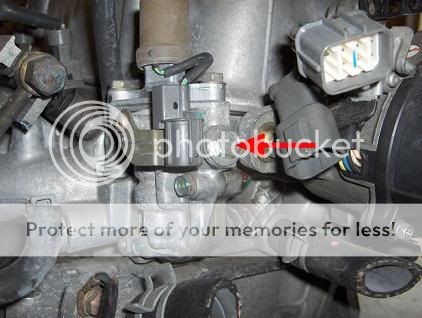The D15B engine, a popular choice in Honda Civics, is known for its reliability and fuel efficiency. However, even this workhorse can experience issues, especially when dealing with engine swaps and conversions. One common problem encountered during such modifications is a no-crank condition combined with a missing crank sensor signal, particularly in OBD2 D15B non-VTEC engines. This article will explore the causes and solutions for this specific problem.
Understanding the Problem: No Crank, No Crank Sensor Signal
A “no crank” condition means the engine doesn’t turn over when the ignition key is turned. This is often accompanied by a lack of crank sensor signal, indicating a problem with the sensor or its related circuitry. The crankshaft position sensor (CKP) is vital for engine operation, as it tells the engine control unit (ECU) the position and speed of the crankshaft. Without this information, the ECU cannot properly time the ignition and fuel injection, resulting in a no-start. This issue is frequently encountered when swapping an OBD2 D15B into an older chassis or when modifying the engine’s management system.
Common Causes of a Missing Crank Sensor Signal in a D15B Non VTEC OBD2 Engine
Several factors can contribute to a missing crank sensor signal and a resulting no-crank situation:
- Faulty Crank Sensor: The sensor itself might be damaged or worn out, leading to erratic or no signal output. This is a common starting point for troubleshooting.
- Wiring Issues: Damaged, corroded, or improperly connected wiring between the sensor and the ECU can disrupt the signal transmission. Pay close attention to the wiring harness, especially near connectors.
- Connector Problems: Loose, dirty, or damaged connectors at the sensor or ECU can prevent a proper connection and signal flow. Inspect and clean all relevant connectors.
- Timing Belt/Chain Issues: A broken or improperly timed timing belt/chain can impact the crank sensor’s ability to accurately detect crankshaft position. Verify correct timing belt/chain installation.
- ECU Malfunction: In rare cases, a faulty ECU can fail to recognize or process the crank sensor signal. While less likely, this possibility should be considered after ruling out other causes.
- Missing or Damaged Sensor Trigger Wheel: The crank sensor relies on a reluctor wheel (or trigger wheel) on the crankshaft to generate its signal. Damage or absence of this wheel will prevent signal generation. This is more common in custom or heavily modified setups.
Figure: OBD1 ECU Wiring Diagram. Note that OBD2 wiring is different and should be consulted for accurate troubleshooting.
Troubleshooting Steps: D15B Non VTEC OBD2 No Crank Sensor
- Visually Inspect the Crank Sensor and Wiring: Look for obvious damage, loose connections, or corrosion on the sensor, wiring harness, and connectors.
- Test the Crank Sensor: Use a multimeter to test the sensor’s resistance and voltage output according to the manufacturer’s specifications. This will help determine if the sensor is functioning correctly.
- Check the Wiring Continuity: Use a multimeter to check for continuity between the sensor connector and the ECU connector. This will identify any breaks or shorts in the wiring.
- Inspect the Sensor Trigger Wheel: Ensure the trigger wheel is present, undamaged, and properly positioned on the crankshaft.
- Verify Timing Belt/Chain Alignment: Confirm the timing belt or chain is correctly installed and aligned. Incorrect timing can prevent the engine from cranking and disrupt the crank sensor signal.
 JDM VTEC solenoid
JDM VTEC solenoid
Figure: JDM D15B VTEC Solenoid. While not directly related to the crank sensor, this image highlights the importance of correctly identifying and connecting components during engine swaps.
Solutions
- Replace the Crank Sensor: If testing reveals a faulty sensor, replace it with a new OEM or quality aftermarket part.
- Repair or Replace Wiring: Repair any damaged or corroded wiring. If necessary, replace sections of the wiring harness.
- Clean or Replace Connectors: Clean connectors with electrical contact cleaner. Replace damaged connectors.
- Correct Timing Belt/Chain Issues: Replace a broken timing belt/chain and ensure proper alignment.
- Address ECU Problems: If the ECU is suspected to be faulty, have it tested or replaced by a qualified technician. This is often a last resort after exhausting other possibilities.
Conclusion
A no-crank condition coupled with a missing crank sensor signal in a D15B non-VTEC OBD2 engine can be caused by several factors. By systematically troubleshooting the sensor, wiring, connectors, timing components, and ECU, the root cause can be identified and resolved. This allows for proper engine operation and a successful engine swap or modification. Always consult factory service manuals and wiring diagrams for your specific application to ensure accurate diagnostics and repair.